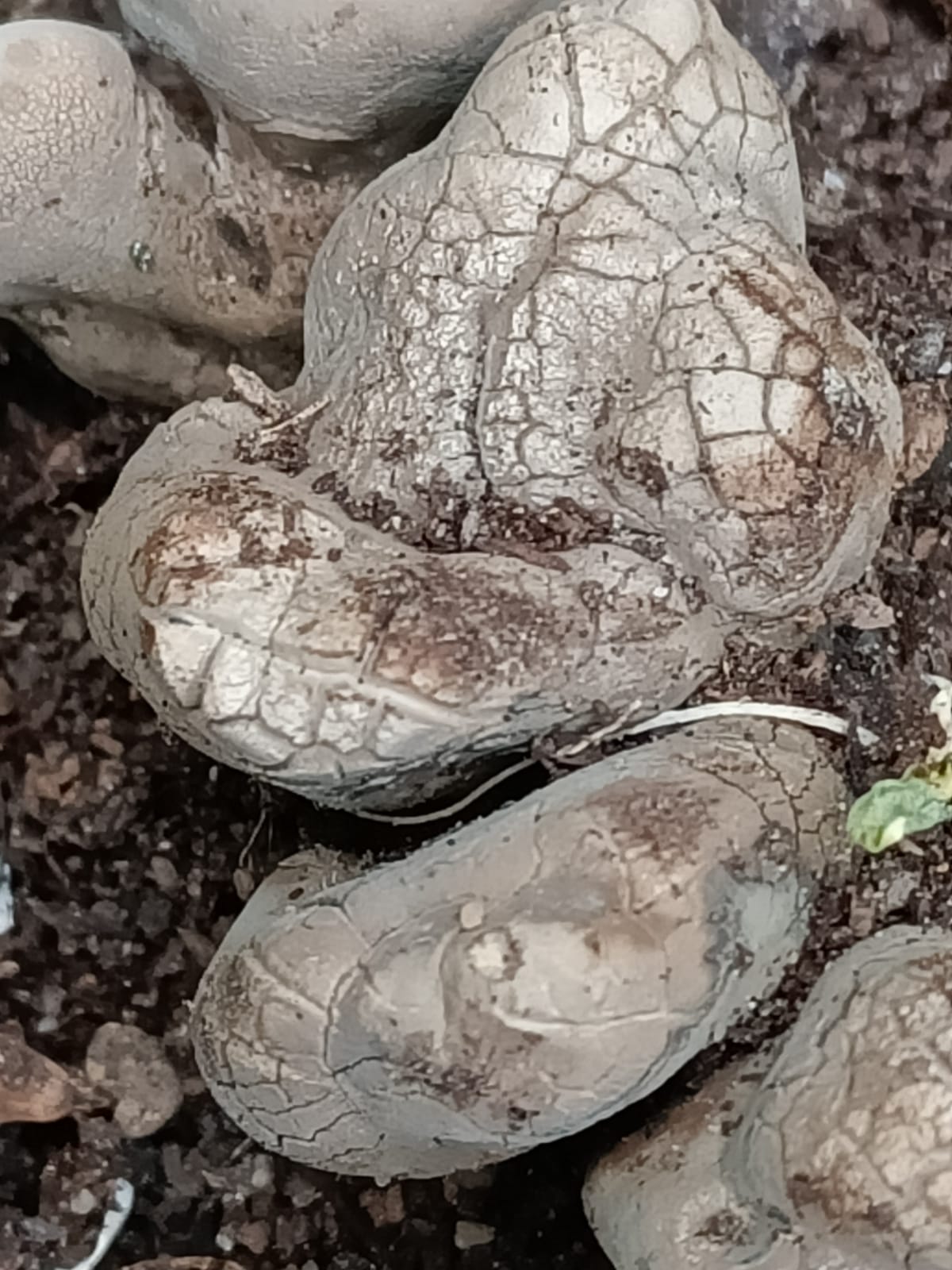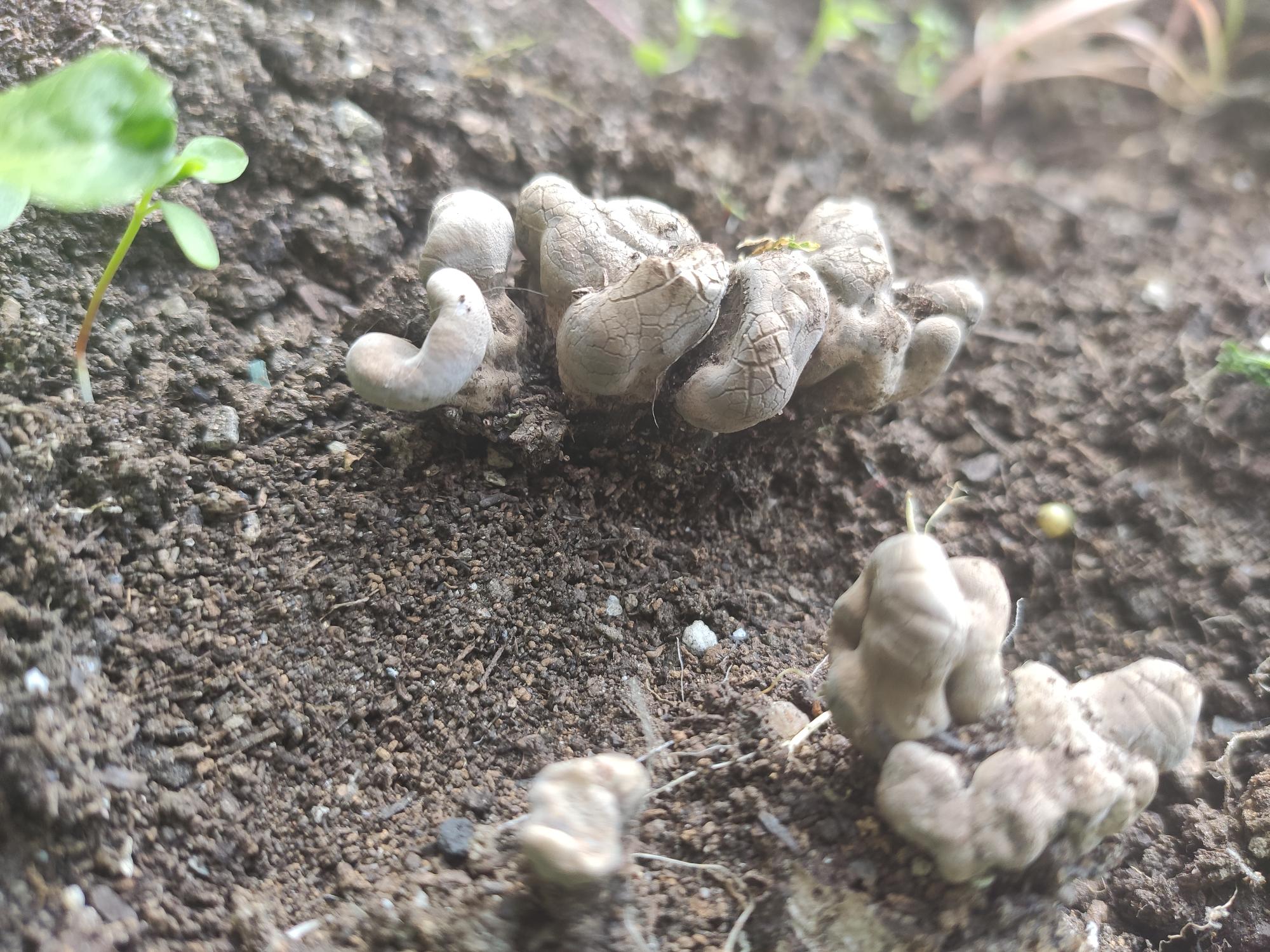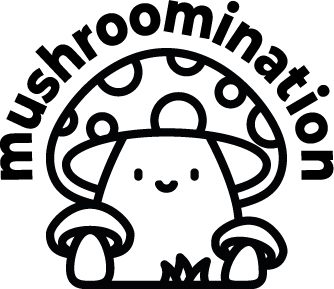


07/06/2021 Xylaria polymorpha, Dead Man’s Fingers
Pottering about my little suburban back garden (in Dublin, Republic of Ireland) which is almost entirely paved, aside from two raised beds at either side, my eye caught sight of a grey undulating clump, sticking out between the chickweed and dry soil. I pondered for a moment whether I should be excited at fungus or I was going to be mildly irritated that one of the neighbourhood cats had left us a cheeky present, I crossed my fingers and hoped for the former. After some tentative poking around with a stick, I was delighted it seemed mycological.
After a few days its grown very slowly, standing currently around 3cm tall, after initial hesitation I have settled on this being Xylaria polymorpha, common name aptly ‘Dead Man’s Fingers’. Photographs usually show them as either black or much more finger like, even coloured at the end looking as though they even have finger nails. However, upon reading, they are described as initially grey-brown, grey, or light grey, or light brown turning black, so I will be keeping watch over them to see what happens. This is where my microscope would be handy, still learning to use it for higher magnification. Social media groups are so useful for learning and when I put a photo in Mushroom Spotters UK, a friendly fellow mushroomer almost immediately helped identify as Xylaria polymorpha. Obviously, one has to be careful and cannot take one person’s word for it, but it often assists greatly and leads to further research and learning.
Lobed and found mainly on beech, Xylaria polymorpha are saprobic and mainly on beech. I carefully moved some of the dirt away to find these were growing on a small, narrow buried stump, which, to my amateur eye doesn’t look like beech. I can’t bend down at the moment so will investigate further when I can, so delighted that these are in my back garden. On that subject, all credit for the close up picture above goes to my partner. First Nature notes interestingly that X. polymorpha doesn’t consume the lignin – which is something no other organism except fungi and bacteria can break down – it consumes ‘polysaccharides – glucan and other minority content compounds of timber that bind the cellulose and lignin together to form what we recognise as wood. As a result, when these and various other ascomycetous fungi have consumed what they can of a dead stump the remainder is a nutrient-rich soft mess that insects and other small creatures are able to feed upon (if other cellulose- or lignin-rotting fungi haven’t found it first).‘ How wonderful to have this in my back garden to watch the process!
Cate2 shows distributions of Xylaria polymorpha as widespread across the British Isles with 14,031 records, the earliest dating to 1904 and the most recent (at time of writing) being 23rd May 2021. Records for Ireland from the National Biodiversity Data Centre have only 3 recorded, including my one, all from this year. The other two being in rural areas in Monaghan. Of course, this is only a reflection of the amount of records and not the amount of individuals of the species. Here in Ireland we seem to lack an accessible comprehensive recording database for fungi in contrast to Cate2 that The Fungus Conservation Trust provides for the UK. A big, important niche in biodiversity conservation missing, an opportunity awaits someone there methinks.
Basic Profile
Scientific name: Xylaria polymorpha
Common names: Dead Man’s Fingers
Size of fruiting body: 3-8cm tall, 1-3cm wide
Spores: In fusiform or banana-shaped asci, 20-30 x 5 µm
Gills: None
Edibility: Inedible, flesh is tough and no distinctive taste
Lookalikes: Xylaria longipes (Dead Moll’s Fingers) is thinner and taller.
On the Red Data List (extinct/critically endangered/endangered/vulnerable/near threatened): No
References:
Cate2 Database, managed and maintained by The Fungus Conservation Trust
Red Data List, British Mycological Society
National Biodiversity Data Centre, The Heritage Council
The Encyclopedia of Fungi of Britain and Europe
Collins Complete Guide to British Mushrooms & Toadstools, Paul Sterry & Barry Hughes, 2009
Mushrooms and Toadstools of Britain and Europe, Edmund Garnweidner, 1994
Mushrooms, Patrick Hardy, 2013
